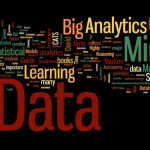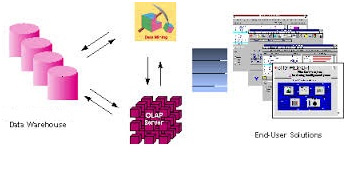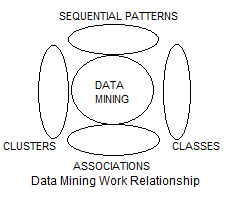What is Data Mining and Its Techniques, Architecture
What is Data Mining and Its Techniques: Everyone must be aware of data mining these days is an innovation also known as knowledge discovery process used for analyzing the different perspectives of data and encapsulate into proficient information. Mining is the process used for the extraction of hidden predictive data from huge databases. This process also indulge various types of tools that are used to predict behaviors of firms and allowing firms to take proactive and knowledge based decisions.

This article what is data mining and the techniques of data mining will give you all the information regarding data mining like data mining workspace, data mining architecture and Data mining techniques with Required Technological drivers
Also See: Different Goals of Data Mining
Data mining implemented on parallel processing workstations, the tools associated with it can examine the massive databases to deliver the sophisticated answers. Moreover, the continuous innovation in workstations power for processing, storage space and statistical software’s increasing the analysis accuracy while cutting down the cost. Through high speed processing, users can experiment with more models to extract the complex information from massive databases.
What is Data Mining and Its Techniques, Architecture
There is no particular definition of Data Mining so let us consider few of its important definition.
Definition 1: The process of mining and discovery of new information in the form of patterns and rules from a huge data is called Data Mining.
Definition 2: The automated extraction of hidden data from a large amount of database is Data Mining.
Definition 3: Data mining refers to the process of extracting the valid and previously unknown information from a large database to make crucial business decisions.
Through mining data from warranty cards of sale records, the retailer could develop promotions to award to specific customer of product.
 Also See: 18 Important Applications of Data Mining
Also See: 18 Important Applications of Data Mining
Data Mining Workspace
The Mining software examines the patterns and relationships based upon the open ended user queries stored in transaction data. The workspace consists of four types of work relationships.
- Clusters: The clustering is a known grouping of data items according to logical relationships and users priority. For instance, the data can be extracted to identify user affinities as well as market sections.
- Classes: To data is used to locate the predetermined groups. For instance, a store could locate the customer data to examine customer’s visit and their purchasing. This information helps to increase the customer traffic at store.
- Sequential Patterns: Data Mining is used to forecast the behavior trends and patterns of market.
- Associations: The associative mining is used to locate associations such as beer-diaper instance.
Data Mining Architecture
Data Warehouse is the initial source that contains internal data used to track all user information coupled with external data. The various relational databases used for the implementation of warehouse as well as for flexible data access are Oracle, Sybase and so on.
On-line Analytical Processing Server (OLAP) defines the end user model for the data to be applied while navigating warehouse. The multidimensional view analyses the data, present the view of business, summarize the product region and line and other perspectives of business.
Data Mining Server must be embedded with data warehouse as well as OLAP server to analyze business. It includes process centric metadata that defines the objectives for business issues such as prospecting, promotion and campaign management. As the data warehouse size increases with new results, the firm can continuously practice the best decisions and apply them in future.

The advanced analysis server take references of users business models directly to warehouse and results into proactive analysis of information. These new results enhance the Meta data storage in OLAP server and represents distilled view of data. Other analysis tools such as reporting, visualization can be applied to plan future actions.
Data Mining Techniques
Several major mining techniques are as below, such as.
- Decision Trees: It’s the most common technique used for data mining because of its simplest structure. The root of decision tree act as a condition or question with multiple answers. Each answer leads to specific data that help us to determine final decision based upon it.
- Sequential Patterns: The pattern analysis used to discover regular events, similar patterns in transaction data. Like, in sales; the historical data of customers helps us to identify the past transactions in a year. Based on the historic purchasing frequency of customer, the best deals or offers have been introduced by business firms.
- Clustering: Using the automatic method, cluster of objects is formed having similar characteristics. By using clustering, classes are defined and then suitable objects are placed in each class.
- Prediction: This method discovers the relationship between independent and dependent instances. For example, in the area of sales; to predict the future profit, sale acts as independent instance and profit could be dependent. Then based on historical data of sales and profit, associated profit is predicted.
- Association: Also called relation technique, in this a pattern is recognized based upon the relationship of items in a single transaction. It is suggested technique for market basket analysis to explore the products that customer frequently demands.
- Classification: Based upon machine learning, used to classify each item in a particular set into predefined groups. This method adopts mathematical techniques such as neural networks, linear programming, and decision trees and so on.
Required Technological drivers
The data mining applications are for all size machines such as mainframe, workstations, clouds, client and server. The size for enterprise applications varies from 10 Gb to 100 Tb. To deliver the applications exceeding 100 Tb, NCR systems are preferred. The technological drivers are as:
- Database size: For maintaining and processing the huge amount of data, need of powerful systems comes in front.
- Query Complexity: To analyze the complex and large number of queries, more powerful system setup is required.
So it was all about what is data mining and the techniques of data mining with architecture. If you have any doubt in your mind or want to add more information then please comment below. We would love to hear from you.

